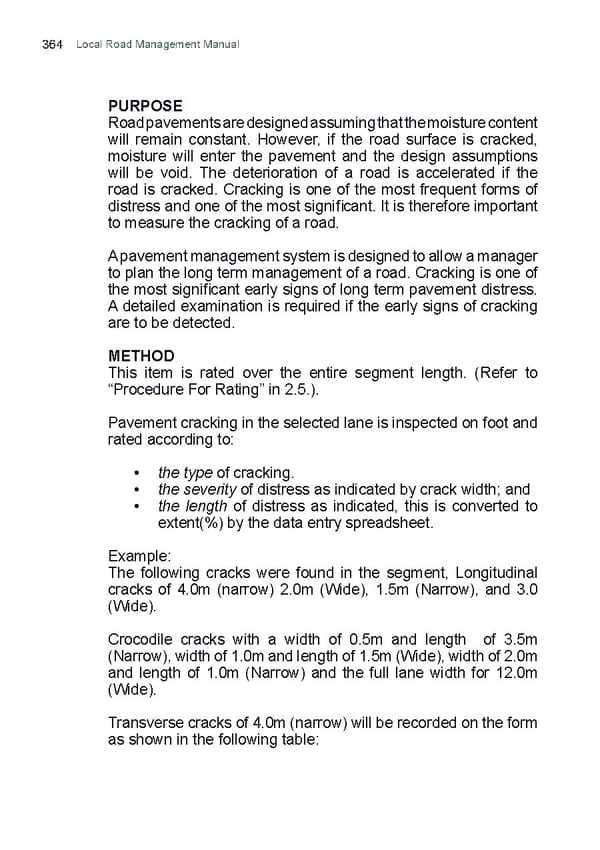Local Road Management Manual 364 PURPOSE Road pavements are designed assuming that the moisture content will remain constant. However, if the road surface is cracked, moisture will enter the pavement and the design assumptions will be void. The deterioration of a road is accelerated if the road is cracked. Cracking is one of the most frequent forms of distress and one of the most significant. It is therefore important to measure the cracking of a road. A pavement management system is designed to allow a manager to plan the long term management of a road. Cracking is one of the most significant early signs of long term pavement distress. A detailed examination is required if the early signs of cracking are to be detected. METHOD This item is rated over the entire segment length. (Refer to “Procedure For Rating” in 2.5.). Pavement cracking in the selected lane is inspected on foot and rated according to: • the type of cracking. • the severity of distress as indicated by crack width; and • the length of distress as indicated, this is converted to extent(%) by the data entry spreadsheet. Example: The following cracks were found in the segment, Longitudinal cracks of 4.0m (narrow) 2.0m (Wide), 1.5m (Narrow), and 3.0 (Wide). Crocodile cracks with a width of 0.5m and length of 3.5m (Narrow), width of 1.0m and length of 1.5m (Wide), width of 2.0m and length of 1.0m (Narrow) and the full lane width for 12.0m (Wide). Transverse cracks of 4.0m (narrow) will be recorded on the form as shown in the following table:
 Local Road Management Manual Page 364 Page 366
Local Road Management Manual Page 364 Page 366